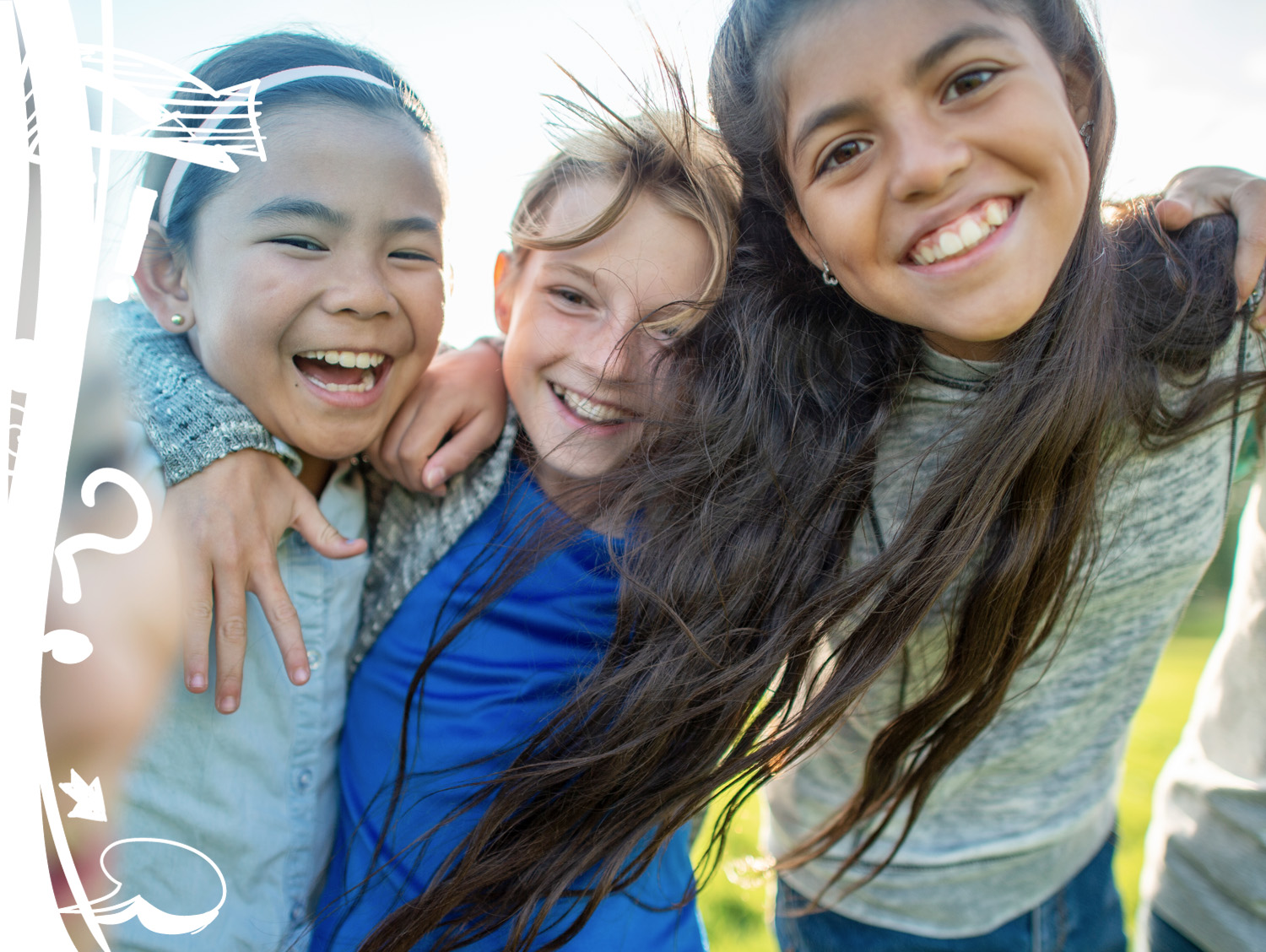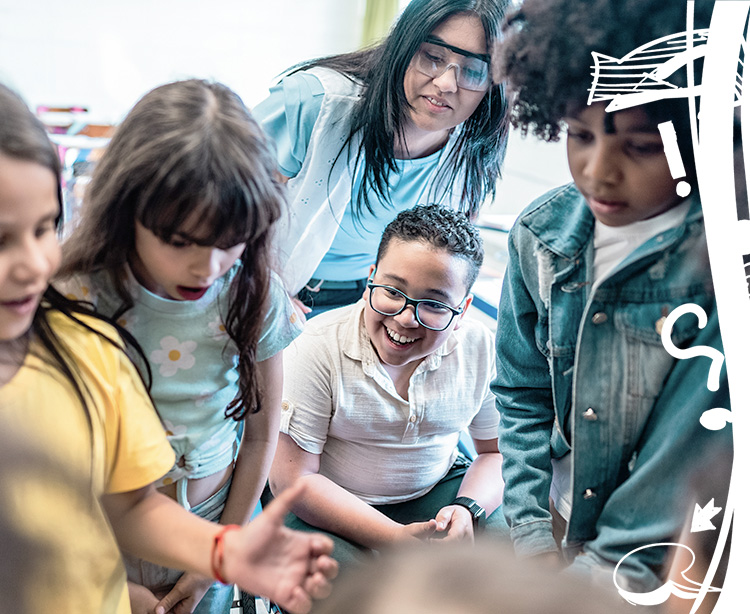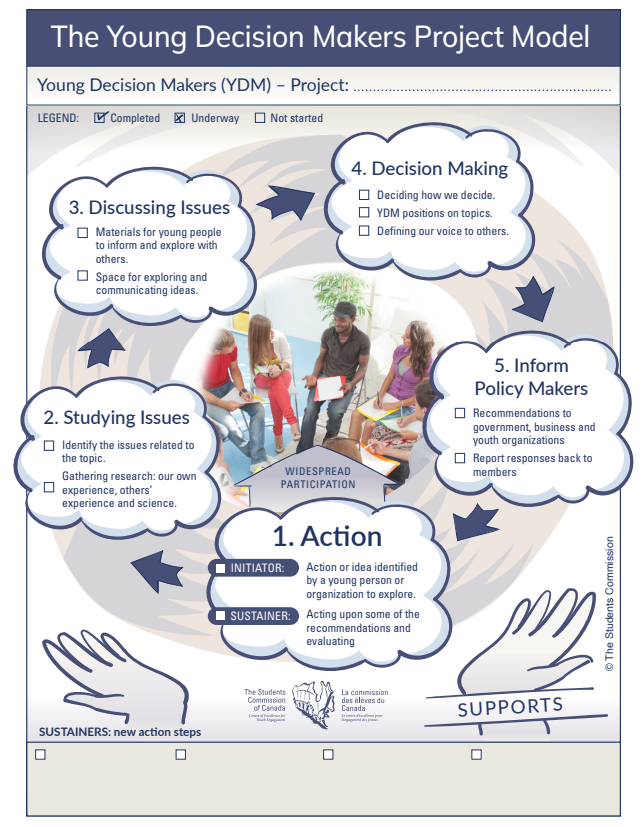While youth engagement contexts and activities vary considerably, there are a number of evidence-based practices and qualities that lead to positive youth developmental outcomes. This section of the How-to Guide will explain these qualities and share practices that support effective youth engagement.
“It was fun,” “I felt listened to,” and “I learned new things” are some of the recurring themes from evaluations of successful youth engagement activities. Combining fun, with the meaningful opportunity to learn, contribute, and be challenged is the art of meaningful YE (head, heart, feet, and spirit). In general, research points to the importance of creating a youth-friendly atmosphere for any youth engaging activity – whether it be a sports group, a youth conference, or involving young people in organizational governance. In other words, the process or qualities of these environments matter just as much, if not more, as the activity itself.
According to Eccles and Gootman23, there are eight key qualities associated with positive developmental settings that promote youth engagement. Whatever the engagement activity or initiative, try to ensure all these qualities are being met.
”I learned a lot more than what I said… especially when we talked about bullying because that brought memories of when people used to bully new kids that came to school. What I have learned today is I’m gonna take it back and share it with my community and with the people of Mama Wii.
Youth Participant

8 Qualities of Positive Developmental settings Building an Environment for Youth for Youth Engagement
To access “8 Key Qualities of Effective Youth Engagement” video.
1. Physical and psychological safety
Physical and psychological safety enhances young people’s ability to learn and participate freely. To maximize young people’s experience in an activity, we must ensure participants feel safe at all times, both in online and in-person settings. This includes holding programming in locations that are free from violence and unsafe health conditions, and reducing the probability of unforeseen threats. This also includes using practices that encourage and increase healthy and safe interactions and decrease unsafe or confrontational interactions among youth. In virtual spaces, ensure that the online environment is free from harassment, bullying, and discrimination by implementing reporting mechanisms and moderating tools for inappropriate behavior. It is also important to establish clear guidelines, setting clear, age-appropriate rules for behavior and interaction within the online platform.
See checklist for practical tips.
2. Appropriate Structure
Appropriate structure is not about creating a rigid program or eliminating unstructured activities. Young people benefit from a variety of experiences, including those that are organic and self-driven. Instead, when we talk about having appropriate structure, we mean creating an environment that has clear boundaries, expectations, and adult support/supervision as required. For instance, in virtual spaces, provide guidance and define goals by using prompts, guidelines, and instructions to help users navigate the virtual platform effectively. It is also important to create a well-structured platform with clear sections for different activities, discussions, and resources. This is about making participants feel safe by creating a consistent environment that they will feel comfortable returning to. Some of the components that contribute to appropriate structure include well-trained staff, age-appropriate activities, and clear guidelines.
See checklist for practical tips.
3. Supportive Relationships
Supportive relationships are a key indicator of positive physical and mental health.24 When young people have at least one caring adult in their lives, they demonstrate fewer risk-associated behaviours, greater academic achievement, and higher self-esteem. Supportive relationships give young people the opportunity to experience respect, warmth, connectedness, and effective communication25. This quality is about having well trained staff and adult allies that will honour young people’s successes and failures, and be willing to extend their support above and beyond the scope of the program. To foster supportive relationships online, foster social interactions by using virtual features such as emojis, chat functions, discussion forums, and breakout rooms. It is important to create online spaces where users can share experiences and support each other, facilitating peer mentorship and group activities.
See checklist for practical tips.
Youth-adult partnership is based on mutual respect for what each collaborator brings to the table. This supersedes more traditional concepts of mentorship, youth-led, leadership development, or coaching which still position adults as the “experts.” In a youth-adult partnership, adults and young people alike are there to learn and share knowledge and power.
Tobacco Free Schools
Speaking from her experience at the Canadian Cancer Society, Lynn Ann Duffley recalls the benefits engaging young people in implementing the province wide Tobacco Free Schools policy. Lynn Ann oversaw the Tobacco-Free School Initiative, and worked with TATU (Teens Against Tobacco Use) Groups to implement the policy. “These groups took on this issue in a variety of ways – developing peer leaders; providing peer support; presenting to near-by schools, municipal leaders and community groups; sharing information; working to change school policies and services; creating inclusive environments for smoking and non-smoking students…”
The TATU groups had a significant role in the policy development and implementation. In particular, they really helped changed the messaging for smokers. Tobacco Free Schools was not against smokers, rather it was about creating a healthier learning environment for everyone. This messaging was crucial to successful implementation and could not have been done without partnering with students.
4. Opportunities for belonging and meaningful inclusion
All young people should feel that they belong regardless of their sexual orientation, gender, ethnicity, abilities, socio-economic background, or peer crowds. This quality is about providing young people with opportunities for social inclusion, social engagement, and integration. This involves teaching and encouraging cultural competence, and creating opportunities for socio-cultural identity formation. It is crucial to implement inclusive spaces in virtual engagement to ensure that all young people feel safe online to contribute, participate, and feel valued.
See checklist for practical tips.
5. Positive Social Norms
Positive social norms and a respectful atmosphere contribute to psychological safety and encourage young people to engage in positive behaviours. This means promoting and upholding an environment that is inviting, non-judgmental, and inclusive, both online and in-person. Maintaining high expectations of youth (and adults) particularly in terms of their online and offline behaviour, interacting with others, and respecting group-created guidelines and values is important. The expectation is that each individual will exhibit their strengths and best efforts most of the time, if a positive atmosphere has been established.
See checklist for practical tips.
BC Health and Wellness Youth Advisory Council
The BC Health and Wellness YAC is a diverse group of youth from all across the province who provide youth perspectives on topics related to health and wellness to inform BC policymaking. YAC members play an important role in guiding BC government decisions by raising the views of young people on issues that matter to them. The group’s main areas of focus include vaping, tobacco, and other related issues that matter to youth.
The BC Health and Wellness YAC meets virtually about 10 times per year, with an in-person meeting once per year (travel costs covered). The YAC is a project of the McCreary Centre Society, a BC-based youth health charity, and the BC Ministries of Health and Education. BC government leaders and other guests might also occasionally join us to share updates and hear feedback from the group. The YAC welcomes youth from diverse backgrounds, communities, and life experiences.
Alberta Student Engagement Initiative
The Alberta Minister’s Youth Council (MYC) consists of about 40 junior and senior high students with diverse interests, identities, backgrounds, and perspectives from all regions of Alberta. Students on the council provide their perspectives on a number of education topics. Students are important partners in the education system and Alberta’s government believes student voices can play a role in shaping it. The Minister’s Youth Council gives students opportunities to share input and perspectives on provincial programs and initiatives.
Student engagement initiatives include:
- Empowering students as leaders of their learning
- Providing opportunities to build positive working relationships with education partners
- Engaging students as leaders of change in their communities
- Supporting leadership development for students at school and community levels
- Honoring the capability and capacity of students to engage as authentic education partners
6. Support for efficacy and mattering
Young people should feel that they matter, that their ideas matter, and that they can make a difference in their community. Youth-friendly environments empower young people to be autonomous, use their voice, and contribute to making a change in their communities. This involves employing practices that are challenging and require youth to take on responsibilities, as well as those that focus on growth and improvement. It is also about continually acknowledging young people’s input and ideas, and creating an environment where they feel listened to and valued as contributors. In virtual environments, allow space for youth to express their ideas and opinions, and validate their contributions. It is important to give constructive feedback and recognition to help youth understand their impact and value, and to offer opportunities for youth to take on leadership roles or contribute to meaningful projects.
See checklist for practical tips.
Advancing 2SLGTBGQ+ Rights
One of the best examples of youth engagement we have, and showcase regularly, is our work with The Youth Project – a support organization for LGBT youth in Nova Scotia. The Youth Project is truly youth centered with a youth board making all decisions on activities and projects, with the support of adults on staff. The Youth Project has been a regular connect for a number of Nova Scotia government departments when developing programs, policies, and strategies that impact youth, including LGBT youth. In 2014 we asked youth from The Youth Project to get involved in the revision of policy manuals with the Department of Community Services to better reflect the reality of LGBT children and youth in care. Recent youth engagement work has led to a ministerial ruling that every school in Nova Scotia must now allow a Gay Straight Alliance in the school if students ask to have one established. – Morris Green, Department of Health & Wellness, NS (2014)
7. Opportunities for skill building and learning
Not surprisingly, young people benefit from opportunities to learn and practice new skills. This quality is about developing increased competencies, confidence, and self-esteem. It is also about fueling curiosity, and giving youth the opportunity to discover new interests. Youth-friendly environments should offer hands-on experience and provide opportunities to develop skills such as teamwork, communication, and problem solving. In virtual spaces, design activities that promote teamwork and collaborative problem-solving to enhance learning experiences. Educators and adult allies can also provide access to courses, workshops, or tutorials that help youth develop new skills.
See checklist for practical tips.
Incorporating a knowledge inquiry process is an effective way to enrich a youth engagement event or program. Knowledge inquiry methods, such as the Young Decision Makers Model, Participatory Action Research, or Collaborative Inquiry, give young people the opportunity to research, discuss, learn, and create messages about an issue. Youth are often excluded from the means of knowledge production in similar ways that they are excluded from decision-making. Research is often done on youth rather than with youth. The shift means engaging youth as researchers, recognizing them as contributors and experts of their own experience, with critical knowledge to contribute.26 See the Students as Researchers Toolkit.
8. Integration of Family, School, and Community Efforts
Young people live and interact in a variety of social settings including school, online, extra-curricular activities, peer groups, family, neighbourhoods, and community organizations. Positive youth development is supported when these spheres can work collectively to create meaningful experiences and decrease risk behaviour. This quality is about developing synergy and connection between a young person’s social environments, bridging the gap between the virtual and in-person settings, thereby increasing their sense of community belonging. Young people benefit when their efforts and values in one area have connections to another. It is also about broadening a young person’s social interactions and breadth of the experience outside the scope of a specific program or initiative. Virtual activities should be aligned with school curricula and community programs to create a cohesive support system for youth development. Online communication channels can also be leveraged to connect youth with teachers, adult allies, mentors, and community members.
See checklist for practical tips.
An Indicator Framework
Review the indicators for Qualities of Youth Engagement, then as a team think about your current practices. How do you currently create youth-friendly environments? Do your practices support all 8 qualities of youth engagement? What could you do differently? Use the Assessment Tool to record your discussions and set goals for improving engagement practices.
Remember, some of these indicators may not be relevant to your context, or may be better understood as a goal your organization is working towards. Don’t be afraid to start small or prioritize the areas you’d like to work on. You don’t need to have everything in place to start practicing youth engagement – the simple task of asking for a young person’s input is a great place to begin.
Assess Your Practice (Qualities)
For additional programming considerations check out the Don’t Forget resource.
8 Qualities at a Glance:
- Physical and Psychological Safety
- Appropriate Structure
- Supportive Relationships
- Opportunities for Belonging and Meaningful Inclusion
- Positive Social Norms
- Support for Efficacy and Mattering
- Opportunities for Skill Building and Learning
- Integration of Family, School, and Community Efforts
”I applied myself to the activities and participating felt good.
Youth Participant#CanadaWeWant Conference 2024
”I’ve learned perspectives (especially different ones) are very important
Youth Participant
”I talked and engaged with new people in discussions! Watched videos, and listened to others!
Youth Participant
”I was able to work with others in a positive environment and developed concrete ideas
Youth Participant
”A lot of people have been through the same kind of things.
Youth Participant#CanadaWeWant conference 2024
”I feel comfortable because people shared ideas about how to overcome the obstacles and it makes me feel good because I have problems with my mother and my family, personal issues.
Youth Participant
”I may not speak much, but I have listened and learned a lot, I felt good about connecting with our group
Youth Participant
”I feel like I met new people and am excited to learn about others.
Youth Participant#CanadaWeWant conference 2024

”I connected by doing ice breakers and introducing myself.
Youth Participant
”Lots of youth feel like they are being ignored and want to be heard. Many youth feel the same feelings.
Youth Participant
”I will use some of the games and techniques in our groups at school and around Halifax, notably dealing with tobacco, but other groups as well.
Youth ParticipantTobacco Control Conference

Sharing Stories
For further evaluation tools, please visit the Students Commission’s Sharing the Stories platform. This online evaluation platform includes academically validated tools to evaluate youth engagement. Check out these tools related to the key qualities of youth engagement:
